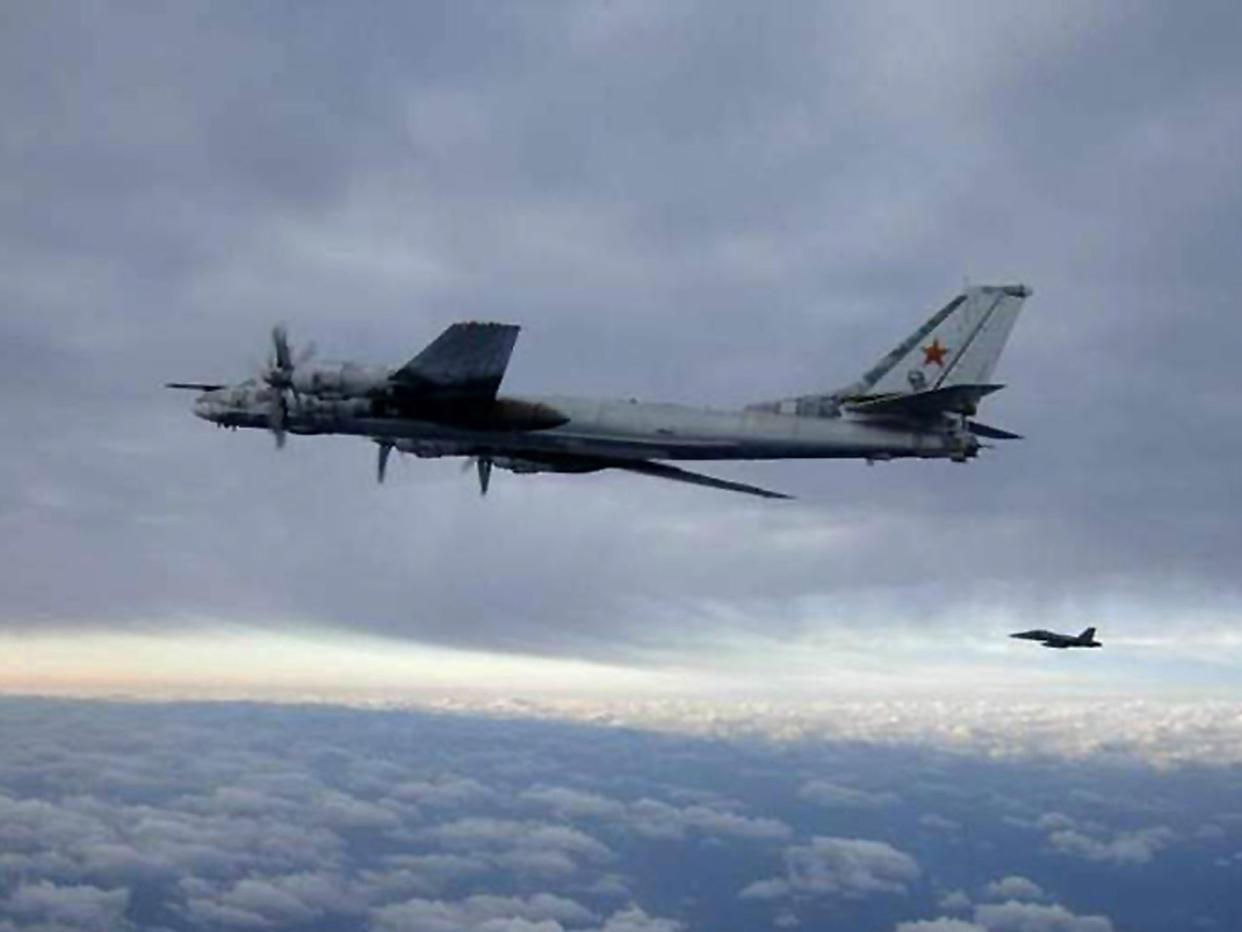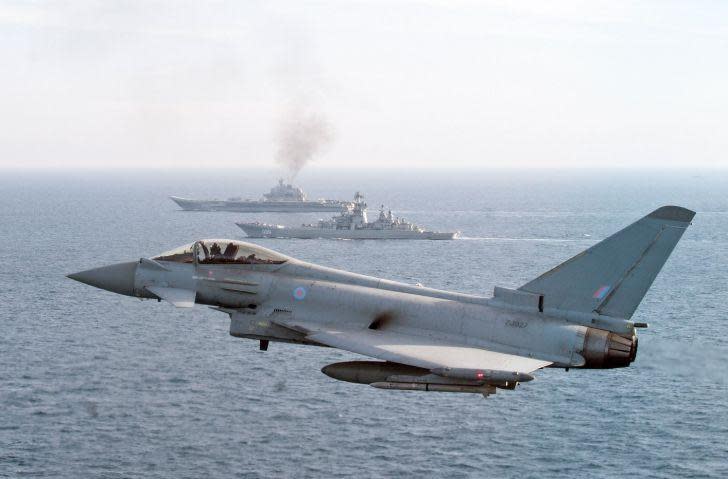Nato intercepting highest number of Russian military planes since the Cold War as 780 incidents recorded in 2016

More Nato fighter jets are being scrambled to monitor and intercept Russian planes than at any time since the end of the Cold War as tensions continue to rise.
Around 780 deployments were made from European military bases last year in response to Russian aircraft, compared to just 410 in 2015.
British planes have been scrambled in numerous operations involving the RAF, which has pilots in the Quick Reaction Alert force ready to launch 24-hours a day.
Incidents have seen Russian bomber planes approach the UK several times, including when Blackjack bombers spent more than five hours skirting British airspace in February.
Russian planes are not known to have violated international regulations or entered any EU nation’s sovereign airspace, flying instead into “identification zones” in international airspace that are monitored for security.
A typical response sees fighter jets launched by the nearest country to visually identify the foreign aircraft and ascertain whether it is a threat, frequently flying alongside until the Russian plane breaks away and turns back.
A further 90 alerts were sparked by non-Russian planes in 2016, such as commercial flights that lost contact with air traffic control, according to officials at Ramstein Air Base in Germany, where the US Air Forces in Europe are headquartered.
It brings the total number of deployments to 870 in the year, which saw Nato increase its air policing missions after noting a “steady increase in Russian military air activity”.
Officials at Ramstein told Germany’s DPA news agency that the rising number of jets being scrambled was partly due to the Turkish Air Force stepping up its operations under Nato command and launching operations along the Syrian border.
Turkey shot down a Russian fighter jet after it crossed the boundary for 17 seconds during a bombing mission in 2015, although the Kremlin claimed it had not violated Turkish airspace.
Nato was among the bodies working to defuse tensions following the attack, which was the first time a member state had shot down a Russian or Soviet plane since 1952.
The number of Russian planes intercepted in Eastern Europe fell slightly last year, with the Lithuanian ministry of defence saying there were 110 deployments in 2016, compared to 160 the previous year.
However, the number is still more than double that seen before the Ukrainian conflict, which has driven worsening relations between Russia and the EU over the Kremlin’s military intervention and annexation of Crimea.
The figures were revealed after Russian planes approached the Alaskan coast for four nights in a row this week, sparking two intercepts and two monitoring operations.
The North American Aerospace Defence Command (Norad) told The Independent two Tu-95 Bear bombers were intercepted on Monday and Thursday, and monitored on Tuesday.
On Wednesday, an IL-38 Russian maritime patrol aircraft appeared and was watched.
US Air Force First Lt Lauren Hill, a spokesperson for Norad, said the latest incident on Thursday saw two American F-22 Raptor stealth fighters and two Canadian Air Force CF-18 Hornets scrambled.
They were launched to intercept two Russian bear bombers off the coast of Alaska at around 7pm local time (2am BST) and visually identify the foreign aircraft.
“They were always in the 200-mile radius that is the Alaskan Air Identification Zone but at no time did they enter sovereign North American airspace, which is 12 miles from land,” First Lt Hill said.
“All four flights were conducted safely and professionally.”

Incidents have not been seen in the same level of intensity by the US since 2014, but Norad is understood not to consider the Russian behaviour abnormal.
Before last week, the most recent previous incident seeing Russian aircraft intercepted by American forces was in 2015.
That saw a pair of Russian bombers fly just 40 miles off the coast of California and around Alaska on 4 July, when a pilot relayed the message: “Good morning, American pilots. We are here to greet you on your Fourth of July Independence Day.”
A Russian intelligence ship, the Viktor Leonov, has recently been spotted off the US coast and two months ago, Russian aircraft had several encounters with the USS Porter as it sailed in the Black Sea.
US-Russian relations have soured in the wake of Mr Trump’s vow to improve ties with Moscow, following mounting tensions over Syria and Ukraine.
The two conflicts, seeing Vladimir Putin back his allies Bashar al-Assad and the former Ukrainian president Viktor Yanukovych, have also increased tensions between Russia and the EU.
Amid increased military deployments and rival drills, both Nato members and Russia have accused each other of “warmongering” amid fears over a new arms race.
In Nato’s latest air exercise, codenamed Ramstein Alloy, fighter jets from the Baltic air policing mission, the Netherlands, Germany, Poland, Norway and the US will practice intercepts over Lithuania on Tuesday.

 Yahoo News
Yahoo News 
